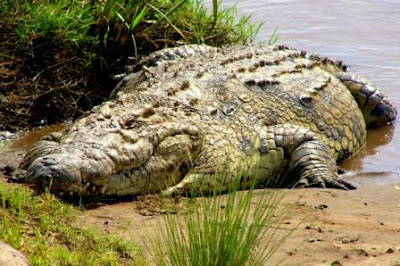Join us this week and share this experience; the day we first discovered South Africa’s most famous and oldest nature reserve...
 |
| Bridge over the Crocodile River into the Park |
Although M and I have spent a lot of time in the bush, much of it in Timbavati, bordering the Kruger Park, where M’s family had farms; we had never actually been into the Kruger (as locals know it). We were living near Nelspruit, Mpumalanga in 2002 (when this happened) and were about to leave for a doctor’s appointment in Johannesburg when his (the doc's) office called to cancel – there had been some emergency… Suddenly, on this beautiful, early August morning, there was a whole day in front of us and giddy with the prospect, we decided to play hooky!
 |
| Kruger Park Grassland |
We first drove to Malelane (the closest town to Nelspruit on route to Mozambique) to look around and stopped at an inn to have coffee, on their deck, jutting out over the Crocodile River. There were Hippos in the river and crocs sunning themselves on the far bank which is the southern border of the Kruger Park. Just down the road, there’s a bridge over the river leading to the Malelane Gate and into the Park and on the spur of the moment, we went to find out more.
 |
| Hippos | |
Day-visitors are welcome and the distances between gates are not as long as we thought; so in we went and spent the whole day driving all over and seeing plenty of wildlife. The park is huge, the size of a small country, and runs North and South along the border with Mozambique on the east. There are access gates in and out of the park every hundred (or so) kilometers and it is easily possible to go in one gate and then out the next in a single day. We arrived at the Malelane Gate in the morning and left by the Paul Kruger Gate that evening, before 6 o’clock.
 |
| Very Big, Very Ugly |
It wasn’t the best time for game, according to the people at the gate, as the summer rains had not yet begun and the veld was very dry; but the dry winter season is the best time to visit this region for various reasons. Daytime temperatures are milder and although Malaria isn’t prevalent this far south, it is even less of a threat in the dry. Viewing wildlife in the lush, thick growth of summer is difficult; animals are easier to spot in thinner vegetation and tend to frequent rivers and waterholes.
 |
| White Rhino in Kruger |
|
Join me tomorrow for Part II...





